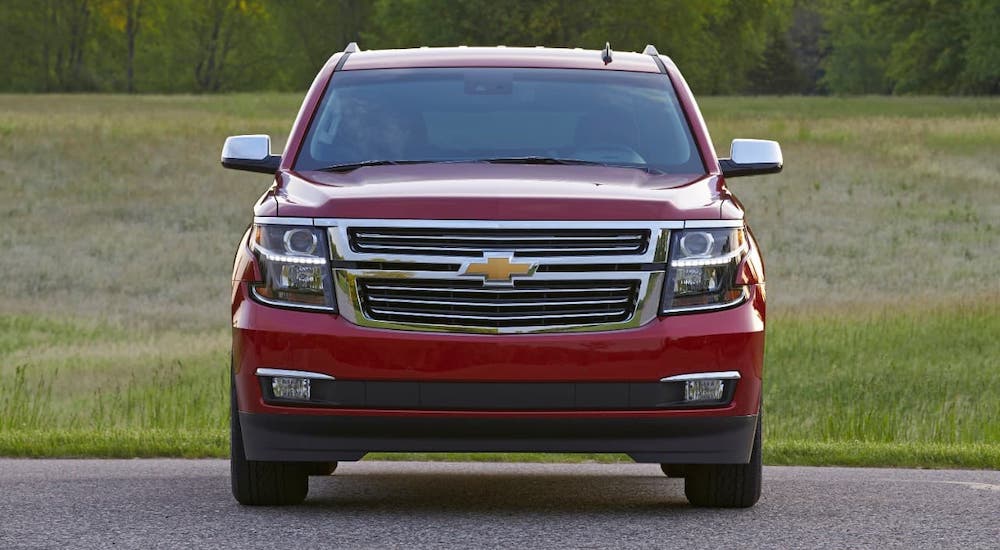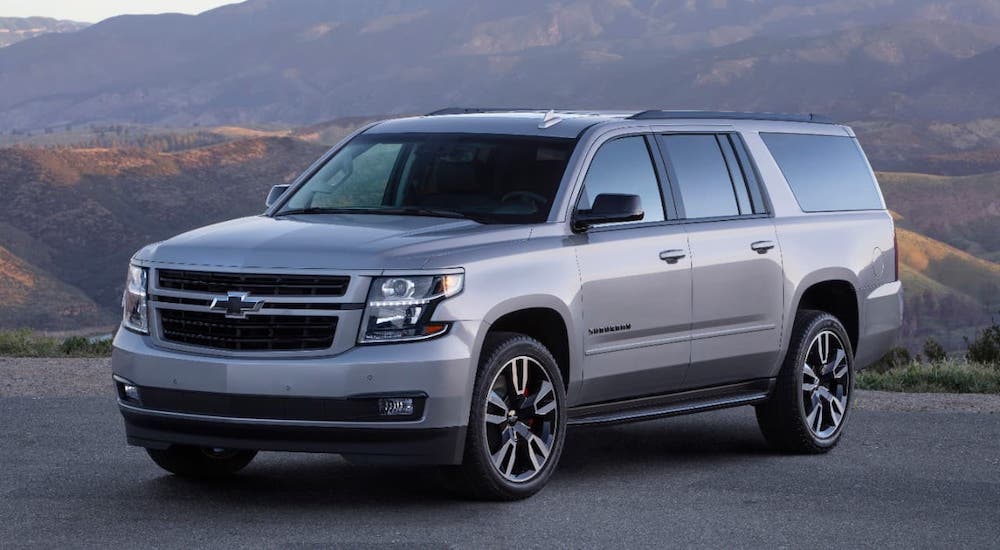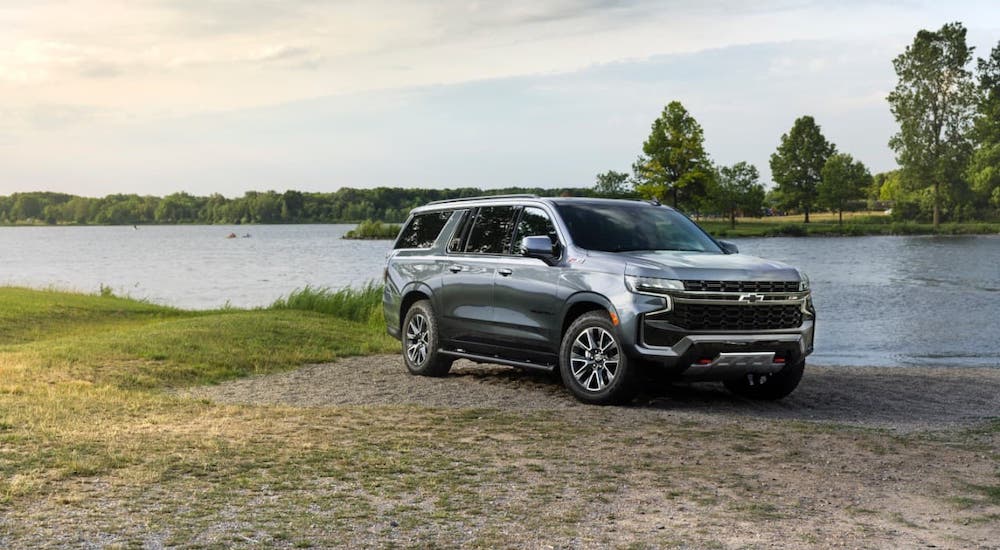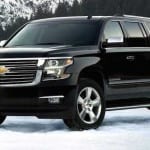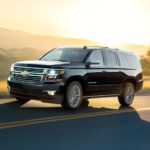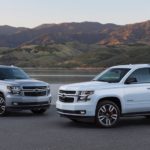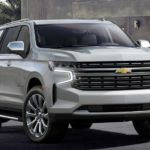Several historic happenings occurred in 1935. For example, 1935 was the year Bob Hope was first heard on network radio. In 1935, Amelia Earhart flew nonstop from Honolulu to Oakland. It was in 1935 that the first canned beer was sold. You could get a loaf of bread for 8 cents, and 11 cents would buy you a pound of beef. In 1935, a new car would have cost you about $625.00, while a gallon of gas was a bargain at 10 cents a gallon. 1935 was also the first year you could buy a Chevy Suburban. In a matter of just a few years, you could spot a new or used Chevy Suburban on the streets of any American city. Here is a short but interesting history of the Suburban.
Highlights
The Chevy Suburban has been in production longer than any other SUV. Of course, they weren’t called SUVs because the term had not yet been coined. From its inception to the 2021 model year, the Suburban has gone through a metamorphosis, and it stands alone as a Chevy icon. When it was launched all of those years ago, nobody could have predicted that it would become the longest-running nameplate in automotive history. Well, it has, and for plenty of good reasons.
The First Generation Suburban
Technically, the very first version of the Chevy Suburban was produced in 1933. It was a body made mostly of wood set upon a truck frame. This first model could seat eight, and it was designed to compete with the likes of the DeSoto, Nash, and Studebaker. In 1934, Chevy decided to lose the wood frame and replaced it with sheet metal. A mere year old, and already, the Suburban was getting an upgrade.
However, the original design from the previous year held strong. The 1934 version, known as the “Carry All-Suburban,” was a functional vehicle and was capable of transporting an entire family. However, these early Suburbans were intended for use by the National Guard and Civilian Conservation Corps.
In 1935, the Chevy Carryall Suburban was available for sale to the general public. It had two doors, and the seats were designed to be removed to transport goods. The very first Suburbans were powered by a 6-cylinder engine that provided 60 horsepower. The Suburban went through a few changes in 1936 and 1937. The model was given a new look with a body that was more streamlined, and the engine increased the horsepower to 79. From 1937 to 1940, the end of the first generation, the Suburban would see more variations. The body style would go through a few noticeable changes but in aesthetics only.
The Second Generation Suburban
1941 through 1946 marked an era of war, which decreased the number of vehicles being produced, including the Suburban. However, during this time period, a new four-door model was introduced. The Suburban would quickly become a favorite with the military as it enabled the transportation of multiple passengers and cargo. Two additional variants emerged during this time: one featured rear panel doors and the other offered tailgates instead of doors. Lastly, the engine got an upgrade with the addition of the 228 cubic-inch V6.
The Third Generation Suburban
At the end of the war, all automakers kicked things up a notch and went into full production once again. The third generation Suburban saw the addition of a split-bench seat in the front and a single passenger seat on the side that could slide forward so passengers could get to the back seat more easily. The “Canopy Express” models were introduced during this period of time, but it was short-lived and would disappear by 1954. Chevy would also offer the Suburban with a four-speed manual, three-speed manual, or four-speed Hydra-Matic automatic.
The Fourth Generation Suburban
The fourth-generation Suburban welcomed a 4.3-liter V8 that delivered 145 horsepower and a 4.6-liter V8 that produced a healthy 155 horsepower. Suburban owners also had the choice of a three-speed manual transmission, four-speed manual transmission, or the four-speed Hydra-Matic automatic transmission. During this time, the Suburban didn’t go through many style changes. In 1955, Chevy introduced the Suburban with a trapezoid grille, front body fenders, and a flatter hood, but that would be the biggest change in design. The big news was that the Suburban would be offered with four-wheel drive.
The Fifth and Sixth Generation Suburban
The fifties and sixties saw a number of significant changes to the Chevy Suburban. Engine choices during this time period increased exponentially. In 1960, the model began sporting a wrap-around windshield and independent suspension. In 1962, the hood styling changed, and door glass became larger. The 1970s saw the addition of disc brakes and a tilted steering wheel, which was optional at the time. The 1970s also ushered in a new wave of Suburban fans as the model would rapidly become a favorite recreation vehicle.
The Seventh and Eighth Generation Suburban
The public would see several changes in the Chevy Suburban with the seventh and eighth generations. One of the first major changes was the addition of the diesel engine, which was offered in the form of a 350 cubic-inch V8. You could now get air conditioning and heating under the third seat, and Chevy removed all asbestos from the rear brakes. In 1985, a new grille was introduced, giving the Suburban a modern look. Starting in 1994, several changes would occur in the Suburban every year thanks in part to the advancements in technology.
The Ninth Generation Suburban Through the Present
There have been many changes with the Suburban since 2000. In the last 20 years, engines have become more powerful, transmission choices have changed, towing capacities have risen, and there have been too many technological changes to mention. The new Chevy Suburban is a modern masterpiece complete with the technology, safety features, and power you have come to expect from a Chevy model. With each passing year since 2000, the Chevy Suburban becomes more streamlined, more technologically updated, and more powerful.
The current 2021 model Suburban is sleek and stylish, with three engine options producing a range of 277-420 horsepower, and it can even tow 8,200 lbs. You have five trim options to choose from and nine possible color options. Not to mention, this Suburban is bigger than ever, with up to 144.7 cubic feet of cargo volume. Even now, the Suburban is big, capable, and stylish all at once.
A Family Car for Generations
The Chevy Suburban has been a beloved family car for years, and it’s easy to see why. The Suburban has been updated to meet the changing times and upgraded with all of the latest technology and power specs possible. Looking back, it’s amazing to see just how much the Suburban has changed from its initial 1935 style, but it looks like the future for the Suburban is bright. Even now, Chevy is improving the Suburban with more upgrades and customizability options to make your Suburban unique. We can’t wait to see what the future has in store for this staple family SUV.
